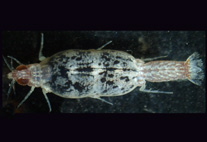Abstract
Tridium kieri Tandon & Srivastava, 1980, a clypeasteroid micro-echinoid from the Middle Eocene of Kachchh, India, has an apical system with just 3 gonopores. This condition is otherwise almost unknown among clypeasteroids, yet the morphology of Tridium is very similar to that of extant Fibularia, including members of another relatively poorly known genus from the Indian subcontinent and Western Australia, Cyamidia Lambert & Thiéry, 1914. Re-examination of the type and additional material of T. kieri and Cyamidia paucipora Brunnschweiler, 1962, along with specimens identified as C. nummulitica nummulitica (Duncan & Sladen, 1884), allows for redescription of these forms. For the first time, maps of coronal plate architecture of Tridium and Cyamidia are developed, and SEM images of test surface details of the former are provided. Such new sources of data aid determination of their phylogenetic position among a subset of laganiform clypeasteroid taxa. During these analyses, new data were uncovered for two additional enigmatic, fibulariid taxa, Leniechinus herricki Kier, 1968 (Middle Eocene, North America), and Lenicyamidia compta Brunnschweiler, 1962 (Eocene, Western Australia). Both species were added to the overall analysis. These observations lead to the conclusion that Tridium falls within the genus Fibularia Lamarck, 1816, prompting reassignment of T. kieri to Fibularia along with refinement of the diagnosis of the Fibulariidae Gray, 1855. The Western Australian representative of Cyamidia, C. paucipora, was found to represent juveniles of Lenicyamidia compta; it is here synonymized with the latter. The genus Cyamidia thus appears to be restricted to the Indian Subcontinent.

